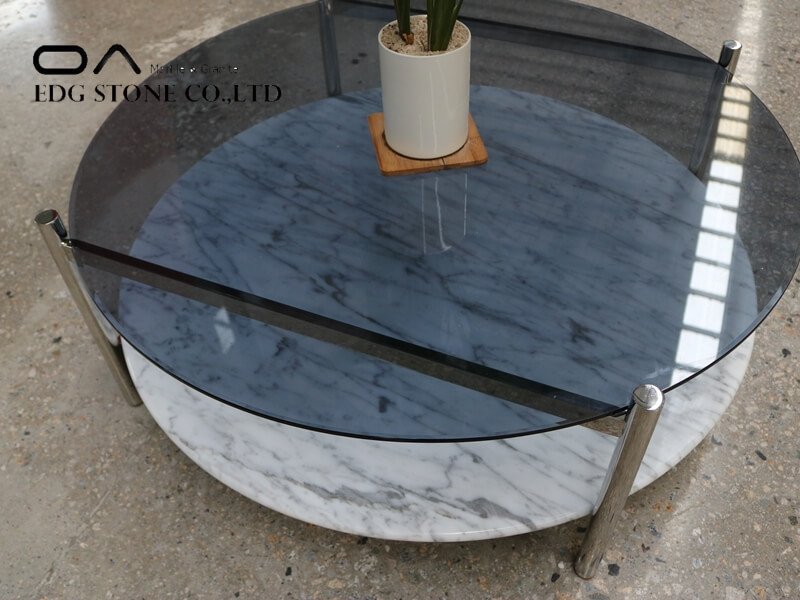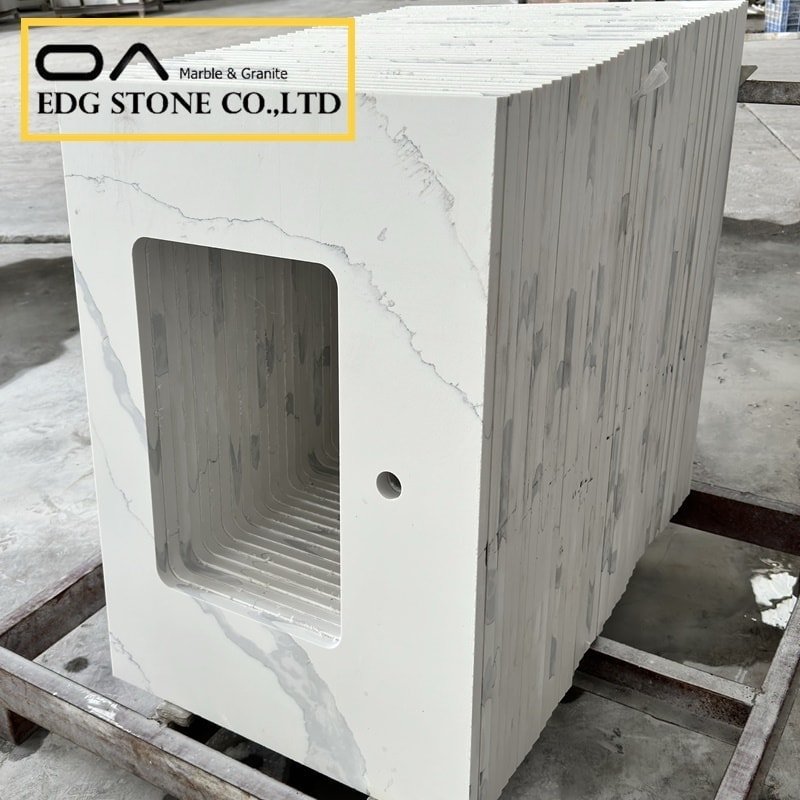In modern home decoration, although some styles do not widely use marble, there are a few places that will definitely be used, that is, our kitchen and bathroom. However, compared with other spaces, the kitchen and bathroom space has been in a relatively humid environment for a long time.
Compared with other materials, marble has relatively better moisture-proof performance, but it is easy to breed mold in a humid environment for a long time. The use of moldy marble will not only affect the appearance but also affect health. So how to deal with marble after mold?
When mildew grows on light-colored marble countertops, the following methods can be used to deal with it:
When mold grows on the marble vanity countertop and bathroom wall, first stop using water, open the window, and dry the vanity and bathroom wall.
Use a cleaning pad sprayed with emery on one side, dipped in VD stone pigment remover for cleaning. After cleaning, rinse with clean water, and then dry.
Moldy washstands and bathroom walls will disappear after the above treatment. The next step is to carry out the protective treatment. After the bathroom wall of the sink is dried, it can be treated with a VD stone permeability protective agent in about 1 day.
When using marble sinks and bathrooms in the future, always keep ventilating. After use, wipe the water stains on the sinks and bathroom walls.
The following methods can be used to deal with the growth of mold on dark marble countertops:
Take a sponge, soak the sponge, squeeze the excess water out of the sponge, and gently wipe the moldy areas on the marble countertop with the sponge.
If the mildew cannot be removed after wiping, you can use heavy calcium carbonate and hydrogen peroxide to make an ointment for later use.
Then wipe the moldy areas on the wet marble countertop with distilled water, apply the ointment to the moldy areas, wrap the area with the ointment in a plastic bag, and tie the edge of the plastic bag with tape to seal the ointment on the marble. After the ointment is dry, rinse the marble surface with water to remove the ointment, and the mold on the marble will be removed. If it is not completely removed, you can do it again.
When using marble cabinets, if the maintenance is not done properly, it is easy to breed mold. When the cabinet marbles grow mold, you can also use the above methods to deal with. However, due to a large amount of oil in the kitchen, care must be taken to maintain the marble cabinets in the kitchen.
To prevent mildew on the marble cabinets, do not put hot pots or hot water directly on the marble cabinets when cooking, so as not to damage the surface of the marble cabinets; do not hit the marble surface with sharp objects to avoid scratching the marble surface.
Because the marble countertop has many pores, do not put the dye directly on the marble countertop, so as to avoid the staining phenomenon on the marble surface caused by the splashing of the dye. When there is a watermark on the marble countertop, it must be removed in time. It is best to use a soft scouring pad or a damp soft cloth to clean the marble countertops. Avoid using cleaning balls and chemical agents for scrubbing.







